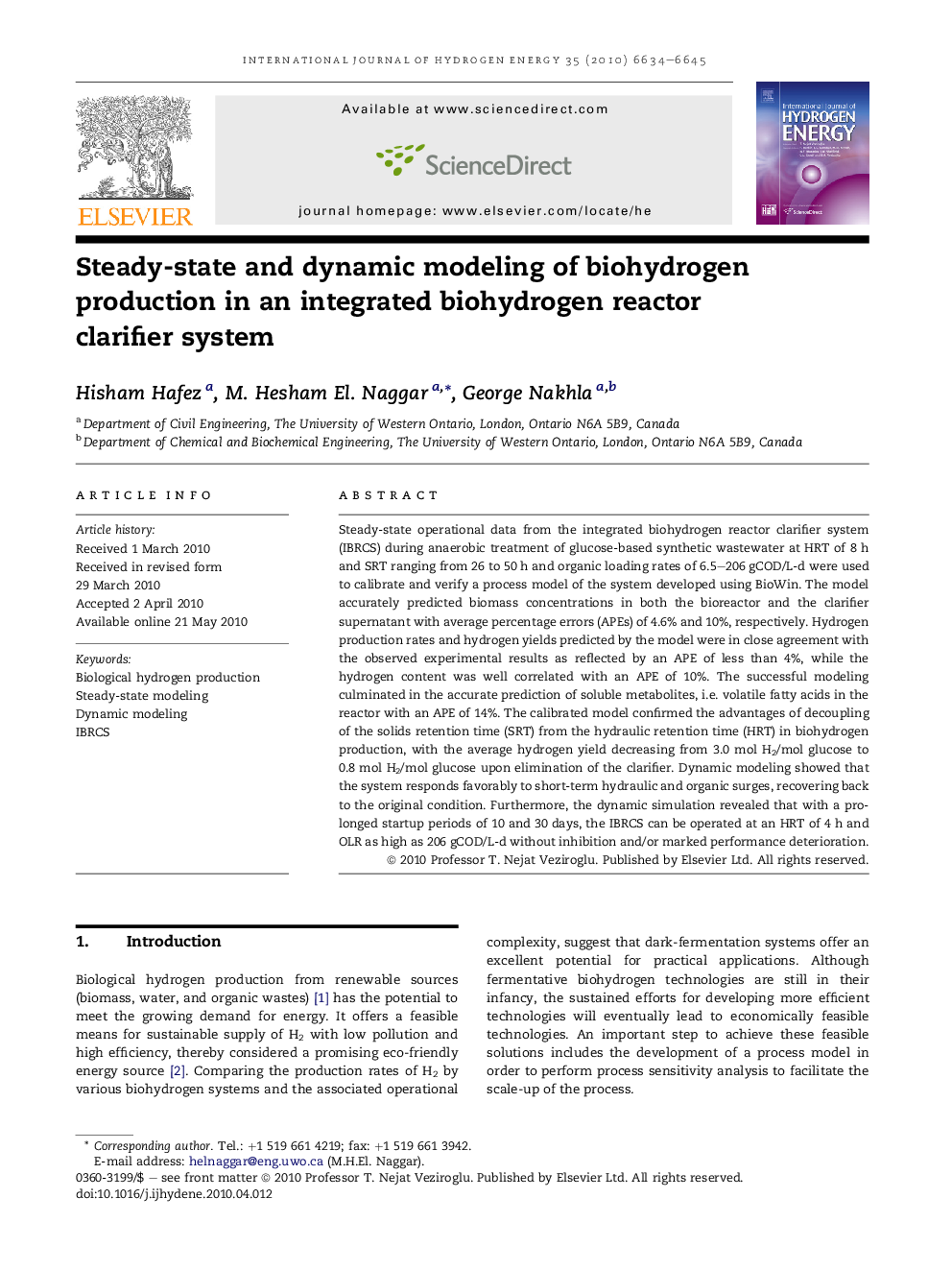| Article ID | Journal | Published Year | Pages | File Type |
|---|---|---|---|---|
| 1272899 | International Journal of Hydrogen Energy | 2010 | 12 Pages |
Steady-state operational data from the integrated biohydrogen reactor clarifier system (IBRCS) during anaerobic treatment of glucose-based synthetic wastewater at HRT of 8 h and SRT ranging from 26 to 50 h and organic loading rates of 6.5–206 gCOD/L-d were used to calibrate and verify a process model of the system developed using BioWin. The model accurately predicted biomass concentrations in both the bioreactor and the clarifier supernatant with average percentage errors (APEs) of 4.6% and 10%, respectively. Hydrogen production rates and hydrogen yields predicted by the model were in close agreement with the observed experimental results as reflected by an APE of less than 4%, while the hydrogen content was well correlated with an APE of 10%. The successful modeling culminated in the accurate prediction of soluble metabolites, i.e. volatile fatty acids in the reactor with an APE of 14%. The calibrated model confirmed the advantages of decoupling of the solids retention time (SRT) from the hydraulic retention time (HRT) in biohydrogen production, with the average hydrogen yield decreasing from 3.0 mol H2/mol glucose to 0.8 mol H2/mol glucose upon elimination of the clarifier. Dynamic modeling showed that the system responds favorably to short-term hydraulic and organic surges, recovering back to the original condition. Furthermore, the dynamic simulation revealed that with a prolonged startup periods of 10 and 30 days, the IBRCS can be operated at an HRT of 4 h and OLR as high as 206 gCOD/L-d without inhibition and/or marked performance deterioration.
